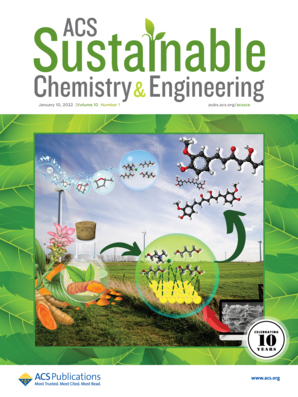Sustainable Lignocellulosic Room Temperature Phosphorescent Inks for Intelligent Packaging and Anti-Counterfeiting
IF 7.1
1区 化学
Q1 CHEMISTRY, MULTIDISCIPLINARY
引用次数: 0
Abstract
Developing sustainable room-temperature phosphorescent (RTP) inks from abundant biomass resources is extremely attractive but remains a significant challenge in the field. Herein, the RTP lignocellulose was facilely prepared by simple immersion of lignocellulose powder in MgCl2 solutions. Compared to untreated lignocellulose, lignocellulose treated with 1 M MgCl2 exhibited a 10.7-fold increase in RTP intensity and a significantly prolonged RTP lifetime of 315.8 ms. The enhanced RTP performance of the treated lignocellulose is attributed to the synergistic effect of enhancing hydrogen bond interactions to suppress non-radiative transitions and narrowing the energy gap to accelerate the intersystem crossing (ISC) rate. Subsequently, the RTP lignocellulose was formulated into environmentally friendly water-based inks for screen printing using poly(vinyl alcohol) (PVA) as the binder, which was applied to the humidity-responsive smart labels in biscuit packaging and RTP anti-counterfeiting with time-resolved and multilevel information encryption. This research provides a new strategy for the development of sustainable RTP inks and prints.

用于智能包装和防伪的可持续木质纤维素室温磷光油墨
利用丰富的生物质资源开发可持续室温磷光(RTP)油墨极具吸引力,但仍是该领域的重大挑战。本文通过将木质纤维素粉末简单浸泡在MgCl2溶液中,方便地制备了RTP木质纤维素。与未处理木质纤维素相比,1 M MgCl2处理木质纤维素的RTP强度增加了10.7倍,RTP寿命显著延长,为315.8 ms。处理后木质纤维素的RTP性能增强是由于增强氢键相互作用抑制非辐射跃迁和缩小能隙加速系统间交叉(ISC)速率的协同效应。随后,以聚乙烯醇(PVA)为粘合剂,将RTP木质纤维素配制成环保型水性丝网印刷油墨,应用于饼干包装中的湿度响应智能标签和具有时间分辨和多级信息加密的RTP防伪。本研究为可持续RTP油墨和印刷品的发展提供了新的策略。
本文章由计算机程序翻译,如有差异,请以英文原文为准。
求助全文
约1分钟内获得全文
求助全文
来源期刊

ACS Sustainable Chemistry & Engineering
CHEMISTRY, MULTIDISCIPLINARY-ENGINEERING, CHEMICAL
CiteScore
13.80
自引率
4.80%
发文量
1470
审稿时长
1.7 months
期刊介绍:
ACS Sustainable Chemistry & Engineering is a prestigious weekly peer-reviewed scientific journal published by the American Chemical Society. Dedicated to advancing the principles of green chemistry and green engineering, it covers a wide array of research topics including green chemistry, green engineering, biomass, alternative energy, and life cycle assessment.
The journal welcomes submissions in various formats, including Letters, Articles, Features, and Perspectives (Reviews), that address the challenges of sustainability in the chemical enterprise and contribute to the advancement of sustainable practices. Join us in shaping the future of sustainable chemistry and engineering.
 求助内容:
求助内容: 应助结果提醒方式:
应助结果提醒方式:


